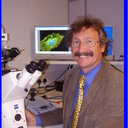CD133 glycosylation is enhanced by hypoxia in cultured glioma stem cells.
الكلمات الدالة
نبذة مختصرة
The cancer stem cell (CSC) marker CD133 is widely expressed in gliomas and employed mostly by use of the CD133/1 antibody which binds the extracellular glycosylated AC133 epitope. CD133 recognition may, however, be affected by its glycosylation pattern and oxygen tension. The present study investigates the effect of oxygen deprivation on CD133 expression and glycosylation status employing a high AC133-expressing glioblastoma multiforme (GBM) cell line, IN699. IN699 cells were cultured under normoxic (21% O2) and hypoxic (3% O2) conditions. CD133 expression was analysed by western blotting (WB), qRT-PCR, immunocytochemistry (ICC) and flow cytometry using the glycosylation-specific antibody CD133/1 and ab19898 which binds the unglycosylated intra-cellular residues of CD133. By flow cytometry, ab19898 detected 94.1% and 96.2% CD133+ cells under normoxia and hypoxia, respectively. Hypoxia significantly increased the percentage of CD133+ cells from 69% to 92% using CD133/1 (p<0.005). Moreover, a significantly higher geomean fluorescence intensity (GMI) was demonstrated by ab19898 (p<0.005) in CD133+ cells. WB and qRT-PCR results were consistent with flow cytometry data. Furthermore, over a period of 72-h incubation under normoxic and hypoxic conditions after autoMACS sorting, an average of 31.8% and 42.2%, respectively, of CD133-negative IN699 cells became positive using CD133/1. Our data show that a) previously reported CD133- cells may have been misidentified using the glycosylation-specific CD133/1 as constitutive expression of CD133 was detected by the intracellular antibody ab19898; b) hypoxia promotes glycosylation status of CD133, indicating possible involvement of glycosylated CD133 in the process of anti-hypoxia-mediated apoptosis.




